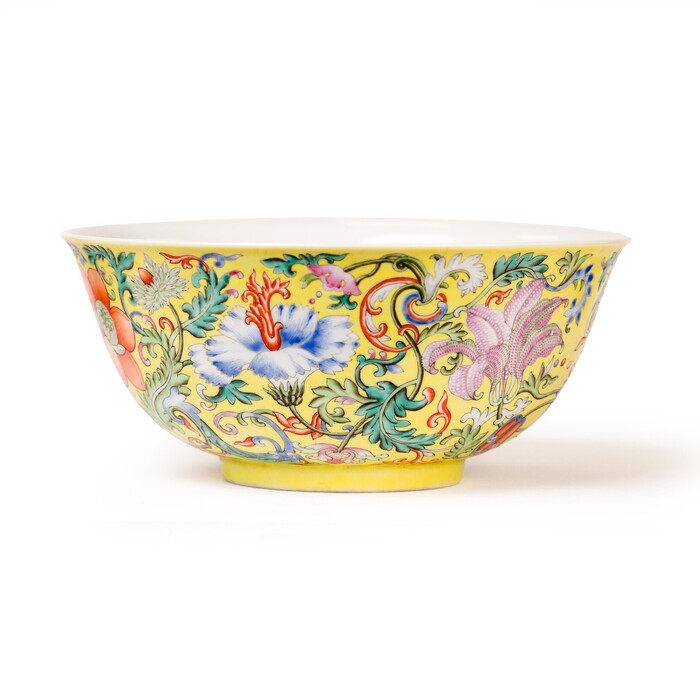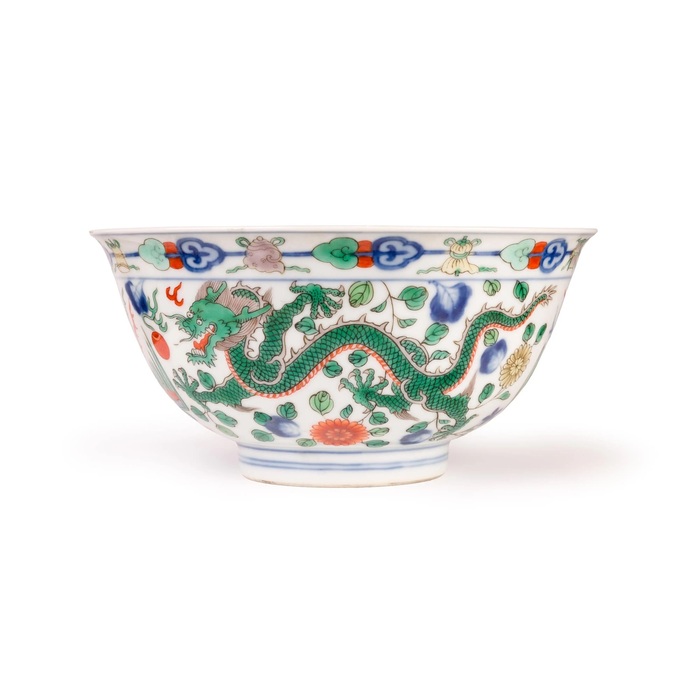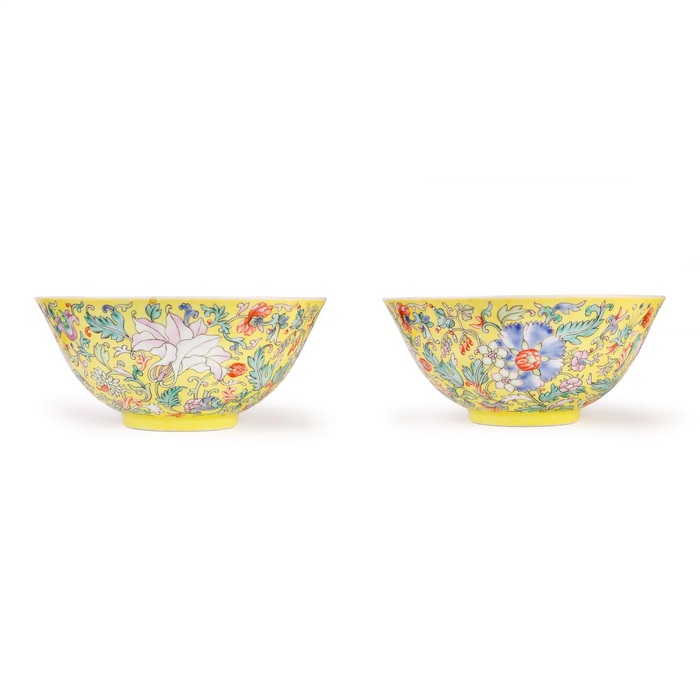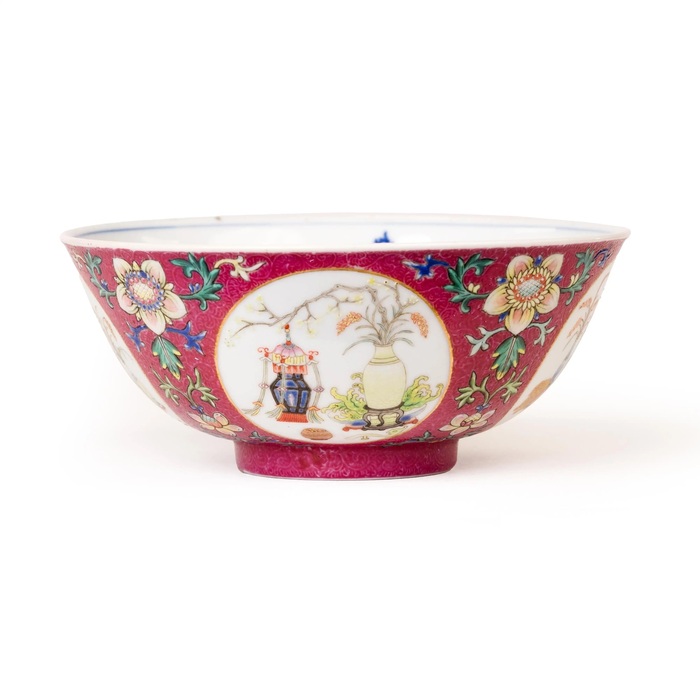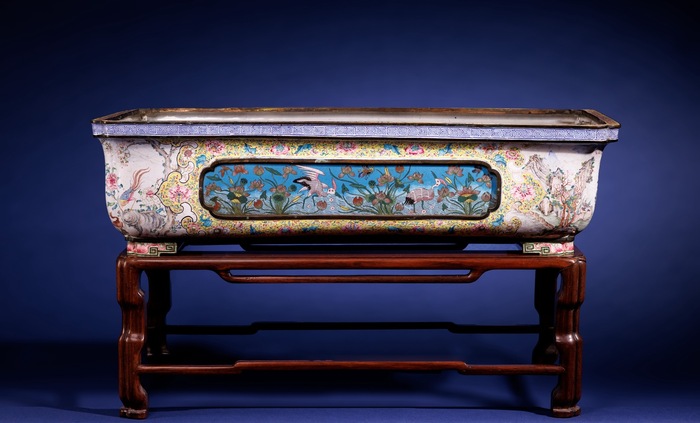In storage for a century, a remarkable cache of Chinese works of art comes for sale in London this autumn. Close to 700 pieces of primarily 18th and 19th century porcelain and enamel, acquired by a British industrialist travelling throughout the Far East in the first quarter of the 20th century, were recently discovered by Roseberys auction house. A single-owner sale of 220 lots will be held on October 29th.
Roseberys’ head of Chinese, Japanese and South East Asian Art Bill Forrest was first invited to view the collection in situ in 2021. He vividly recalls the moment he was shown the storerooms where, on rows of shelves, stacks of fine Qing dynasty porcelain had gathered dust since the 1920s.
“It was a privilege to be invited to inspect the collection. I was rendered speechless in front of these objects. It was not just the quantity of material but the number of exceptional pieces – and I was one of the few people to see them in around 100 years."
The centrepiece of the collection is a series of Imperial ‘mark and period’ porcelain bowls made at the peak of the Qing dynasty during the reign of the emperor Qianlong (1735-96) and his successors Jiaqing (1796-1820) and Daoguang (1820-50). Today these hugely decorative ‘Chinese taste’ wares created for use in the court are much coveted by collectors in the Far East.
The group of eight ‘dragon and phoenix’ bowls will carry guides of between £4,000 and £18,000 each. Each decorated in the so-called wucai (five-colour) palette with scenes emblematic of the emperor (the five-clawed dragon) and the empress (the phoenix), the design enjoyed great popularity at the Imperial court. Although closely matched, they were made across a period of several decades. Five carry Qianlong six-character seal marks, two Daoguang marks and one the marks of Jiaqing.
Exquisitely potted and meticulously decorated, bowls are the signature wares of the Daoguang period when Qing porcelain enjoyed its last great flowering.
Carrying some of the sale’s highest expectations at £60,000-£80,000 each are four large-sized Daoguang mark and period ‘floral’ bowls. Each measuring 18cm across, they combine a vivid yellow ground (a colour reserved for the exclusive use of the emperor) with six famille rose enamelled blooms including lotus, peony, chrysanthemum and hibiscus. The interior decorated with five iron-red bats – the wufu – signifies good fortune.
Two smaller bowls in the same design will be offered as pair with an estimate of £40,000-£60,000.
Another highlight is a Daoguang ruby ground ‘medallion’ bowl enamelled with four finely painted vignettes of lanterns – a reference to the annual Lantern Festival and the homonym fengdeng conveying wishes for a ‘good harvest’. An added sophistication is the sgraffito ground – the needlepoint etching of clay to create an underglaze ‘brocade’ design. It is expected to bring £15,000-£25,000.
It emerged that most of this extraordinary collection was assembled by an Edwardian industrialist who travelled extensively in the Far East between 1905-30, the tumultuous period that saw the collapse of the Qing dynasty and the end to over 2,000 years of Imperial rule. Spending a total of seven years living in China at a time when much of the Imperial collection broken up and dispersed, he sent his purchases back to his UK country house where they were immediately put in storerooms.
Chinese works of art from this era frequently fuse Western techniques with traditional Chinese motifs. European missionaries had contributed significantly to the process. The Qing emperors all welcomed the artistic and technical advances Jesuits brought to the court including the technique of painting enamels onto metal.
Roseberys' collection includes an extraordinary number of 18th century painted enamels – more than 300 pieces to be offered in 100 lots. Typically made in Guangzhou (the city in southern China known to European traders as Canton) these include pieces decorated with ‘foreign’ subjects (typically borrowed from European neoclassical or rococo prints) and others produced in the Islamic taste for either Chinese Muslims or export to the Middle East.
A pair of large Qianlong period circular boxes and covers, each measuring 43cm across, are particularly fine examples (estimate £6,000-£10,000), as is a monumental rectangular jardiniere set to each side with cloisonne enamel panels (estimate £20,000-£30,000). Alongside numerous teawares, ritual vessels and dressing items are several rare forms. An arched dial for a European clock painted with Arabic numerals and a pair of pheasants in a landscape is guided at £500-£800.
The mixture of European technology with the Qing taste for magnificence is perhaps best viewed through the clocks and watches enjoyed by the 18th and 19th century Chinese elite. First purchased from European clockmakers catering to the export trade, they were later copied by craftsmen on the Pearl River and given a Chinese 'flavour' with the addition of further ornamentation. It is one of these Guangzhou gilt metal and paste set clocks, a timepiece with an extraordinary Qianlong period case modelled as a wall vase, that Roseberys expect will bring £8,000-£12,000.
The sale will spearhead Roseberys’ autumn series of Asian Art auctions, to be held on the 29th October ahead of their two-day auction of Chinese, Japanese & South East Asian Art on November 6-7. The sale is timed to coincide with the influx of buyers to the UK for the annual Asian Art in London event held in the venues around the capital from late October to November 8. Roseberys is among the 32 participants.


